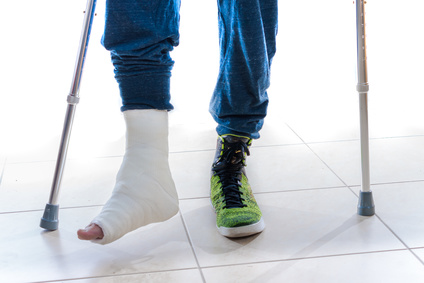Though there may be fewer cars on the roads lately, car accidents can still happen!
People have been distracted by everything that’s happening and some have even been driving a little faster on the roads.
If you’ve had a car accident (AKA Motor Vehicle Accident, or MVA) in the past, you may have had Physiotherapy for resulting injuries and lingering pain afterward. Maybe you were already being treated for your injuries when your Physio clinic had to close their doors due the emerging situation with COVID-19…
How is MVA different than any other injury?
Usually, treatment post MVA is a bit more complex. Sometimes there are multiple injuries, and sometimes there are bone breaks. Often the nervous system has a hard time calming down, resulting in greater than normal muscle tone (tension) and pain. This increased muscle tone can be due to the whiplash that can occur on impact, and can often lead to shoulder/neck pain and headaches.
This also means that the recovery process for MVA injuries may be longer than just the usual muscle strain or ligament sprain.
Other factors that can influence the recovery process are: how we cope after a car accident. Not only is the recovery process different but usually it’s a result of a somewhat traumatic situation, depending on the circumstances of the accident. This can create anxiety (especially getting back on the road) and often, if the accident was not our fault, it can create a sense of something having been taken from us. This sense of loss can be for the time spent in recovery, for the pain we feel, or for the interruption to our lives and plans.
Our coping strategies emotionally can impact how we progress physically.
Symptoms (such as pain and muscle spasm) may begin immediately from the time of accident, or can follow within the next month. If the resulting pain is not gone completely within a month and you have not sought treatment, it is time to do so! This is a sign that while the body’s normal healing process is still working, it may need extra help in getting you back to normal, and sooner rather than later.
The first three months post MVA are telltale signs of how quickly or slowly the recovery process can go. However, it is normal that there may still be some lingering pain and dysfunction even a year after the accident. At that point, although your tissues have healed, the pain pathways and the body’s thresholds for types and duration of activity may have yet normalized.
That is to say, pain does not equal harm though your body may perceive it as such.
While the initial process of getting treatment started (calls with the insurance company, contacting your family physician, possible imaging, and all the paperwork) may seem daunting, research does show the sooner you address the injuries, the better your prognosis.
The first three-month period is recognized by insurance companies as critical. This is why in Ontario the first three months are billed as blocks of time rather than per session. They want to make sure you are consistent with your treatment in order to see results!
What are common MVA injuries / issues?
- Whiplash
- Neck / shoulder tension
- Headaches
- Concussion (*note: you do not have to hit your head to have a concussion!)
- Dizziness / vertigo
- Upper, mid, and lower back strain/sprain
- Numbness, tingling, pins and needles, shooting pains into the extremities
- Contusion (from hitting the steering wheel, dashboard, window, or having the airbag pop out and block your body’s momentum), often the ribs and knees
- Fracture (bone breaks)
- Anxiety and difficulty coping

What does Video or Virtual Physiotherapy do after a car accident?
The world has changed and we have modified how we treat our Physiotherapy patients for now. We will connect with you via online video (it’s like FaceTime or a video conference). We are able to treat anyone in Ontario this way, so if you do not live in our Oakville, Halton area, we can still help!
- Your Physiotherapist will always perform an assessment when first meeting you, getting a thorough history of the accident, your symptoms, and current difficulties (at work or at home).
- Depending on what your tolerance for both manual therapy and exercises might be, your therapist may start slow and gentle and as you improve, they progress the techniques they use and the exercises they prescribe.
- Additionally, they will provide education on self-management strategies for pain, modifications for work and/or home, and the overall recovery process.
- Often, massage therapy will play a role (with a Registered Massage Therapist) in managing both your muscle tension and pain. It may be too intense to start from the very beginning as RMTs usually work the tissues deeper than physios, but as your tolerance for pressure improves, RMT can be a helpful adjunct in the treatment plan. As soon as our Massage Therapists are back to work they will b happy to help you.
Manual therapies can include:
- Joint, soft tissue, and nerve mobilizations
- Trigger point release
- Passive range of motion
- Traction
Exercises can include:
- Stretching techniques
- Postural re-education
- Self-mobilizations
- Active-assisted range of motion
- Strengthening
- Cardio
- Work / sport-specific exercises
Other modalities, when appropriate, can include:
- Ultrasound therapy
- Taping (e.g. Leuko or K-tape) for feedback / support
- Transcutaneous Electrical nerve Stimulation (TENS) or Interferential Current (IFC)
- Acupuncture
As you progress, however, keep in mind that though initially therapy may have a more passive and pain-management approach, it needs to evolve into a more active approach, weaning off the manual therapy, massage, and number of visits.
The purpose of this is not financial; it’s because as your injuries heal and you continue returning to normal, eventually your body needs to strengthen and re-adapt to what its level / type of activity was before the accident. This cannot happen only with manual therapy and massage. The gradual increase in strength and endurance occurs through exercises, activity, and slowly pushing your limits.
This is the reason why coping strategies (and hopefully support from family, friends, and workplace) are so important. It’s hard to want to push your own limits when you’re not emotionally ready. If that is the case, please speak to your family physician regarding an appropriate referral. Remember that mind and body are connected; we need to treat the whole, not only the parts.
Yes, but how do I access Physiotherapy treatment when all the clinics are closed?
In the time of social distancing, a lot of health care practitioners (family physicians, physical and occupational therapists, psychotherapists, etc.), as well as insurers, are adapting.
Though physiotherapy is strongly associated with manual therapy, don’t forget that education and exercises are also essential parts of treatment!
Your pain is not going to stop just because clinics are closed and car accidents will unfortunately still happen.
You can still access physiotherapist knowledge virtually and get the process started. Especially with MVA injuries, it’s best to begin addressing them early on!

Your Physiotherapist can:
- Provide the exact same education and exercise prescription / progression
- Show you (or how a family member at home) can perform self-mobilizations and soft tissue release on your own
- If you’re working from home, we can virtually help you modify your workplace as needed
In fact, this is quite similar to the active approach that eventually supersedes the passive symptom management approach as you progress through a regular MVA treatment plan!
Just remember, whether virtual or in-person, therapy takes time. The results are often gradual, not immediate. That’s okay! The key is consistency, not perfection.
If you have any questions / concerns about how this process would work for you, don’t hesitate to contact us and ask!

